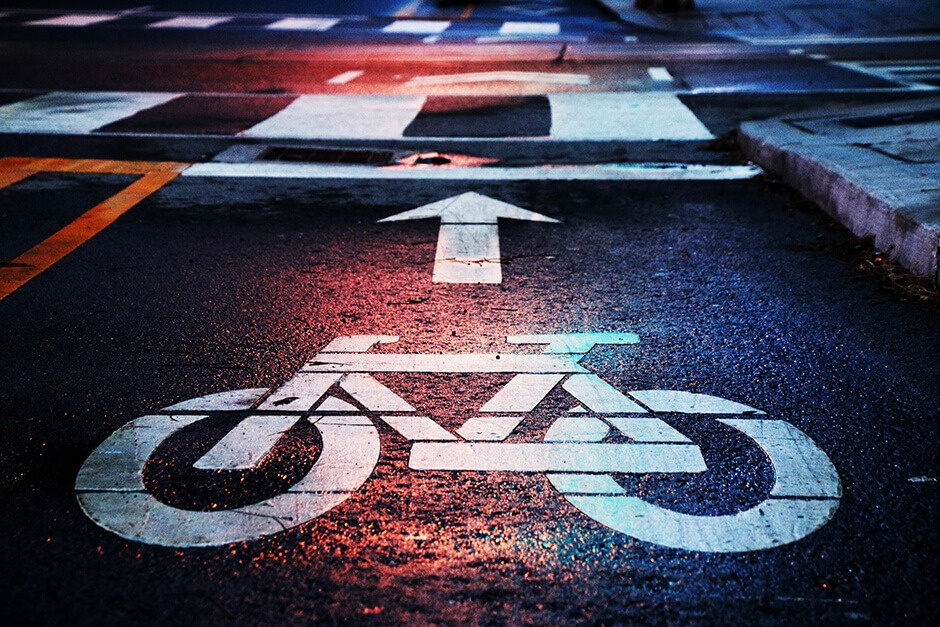Rupert Guinness’ Top 5 Tips for Cycling Safety
1./ BE SEEN: Lighting: As with all electronics you use on the bike, it is vital all battery operated items such as a computer and lights are recharged. The best time to do this is as soon as you finish a ride to avoid forgetting to do so later. On your bike, attach two front (white) and two rear (red) lights in case one runs out, and a rear reflector. Have both a front and rear light on at all time of day … not just at night. To enhance your visibility to oncoming and rear traffic, also place reflective tape on your bike wheels if they have deep rims, crank arms and seat stays. Wear reflective ankle straps and hi-Viz cycling clothes; if not, make sure you have garments made of distinct coloring, or that have reflective strips woven in the material.
2./ BE HEARD: Communication: Install a hands free communications unit like the Terrano system that heightens safety through a two-way link between you and another rider, or a following driver in a support car. This allows others to be alert of your well being or needs, and road hazards that those behind you may not see. The Terrano system can also be connected via blue tooth to your IPhone, ensuring you can also maintain direct contact with parties outside of your ride. Importantly, unlike ear plugs, the well positioned ear pieces of the Terrano system that is attached to the outside of your helmet do not block out ambient noises riders need to hear while cycling, such as traffic, weather and even animal life.
3./ BE SMART: Route and Weather: Study where you are planning to ride to, and the predicted weather conditions.
Select routes with options that, if possible, can cater for any change due to sudden weather shifts or road blockages. Download route maps that have gradients included on them. Let someone know where you will ride to and what route you will take, and also make sure they have copies of your planned route. Furthermore, take adequate clothing to equip yourself for any sudden weather change – for example, a ‘gilet,’ if it cools or if you stop and are sweaty, can make the difference between staying warm or becoming cold and ill. Take a driver’s license or a cycling federation card to identify you in an emergency, or put your name to your helmet.
4./ BE FUELLED: Food and Fluids: An obvious tip, but one that often catches riders out. Myself included! A body replenished with food and fluids will not only provide physical energy, but also ensure the mind is alert to read and respond to situations. Also, it is not only important to be fuelled up when starting a ride, but to remain so during it. This means to eat and drink regularly to avoid ‘hunger flat’ and dehydration. Take supplies such as sports bars, gels and natural foods such as bananas or dried fruit, and ‘bidons’ – or drink bottles – (one for short rides and two for long rides or if in hot/humid conditions); and be prepared to stop to replenish supplies. Always take cash and a credit card too!
5./ BE READY: Bicycle equipment: If your bike is not road worthy, neither will you be. Ensure your bike is regularly serviced and be open to suggested replacement of any parts.
In the short term, before and after each ride, spend a few minutes checking your bike, ie: check your tires for slow leaks or glass, sharp gravel or small items such as tacks or pins that
may be stuck in your tires and a wheel turn from puncturing. Also make sure you have a spare tube or two in case of a flat.
And test your bike for loose parts, from the chain that may need replacing to any screws parts that may have loosened.
A regular 5-minute wash and dry of your bike after a ride will also do wonders for maintaining road worthiness and safety.



